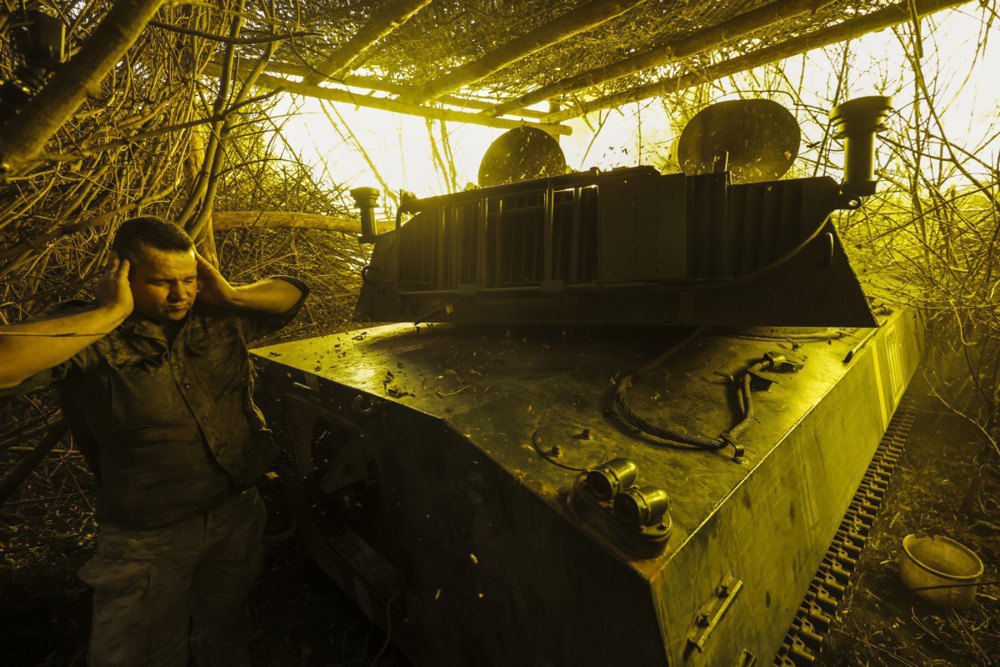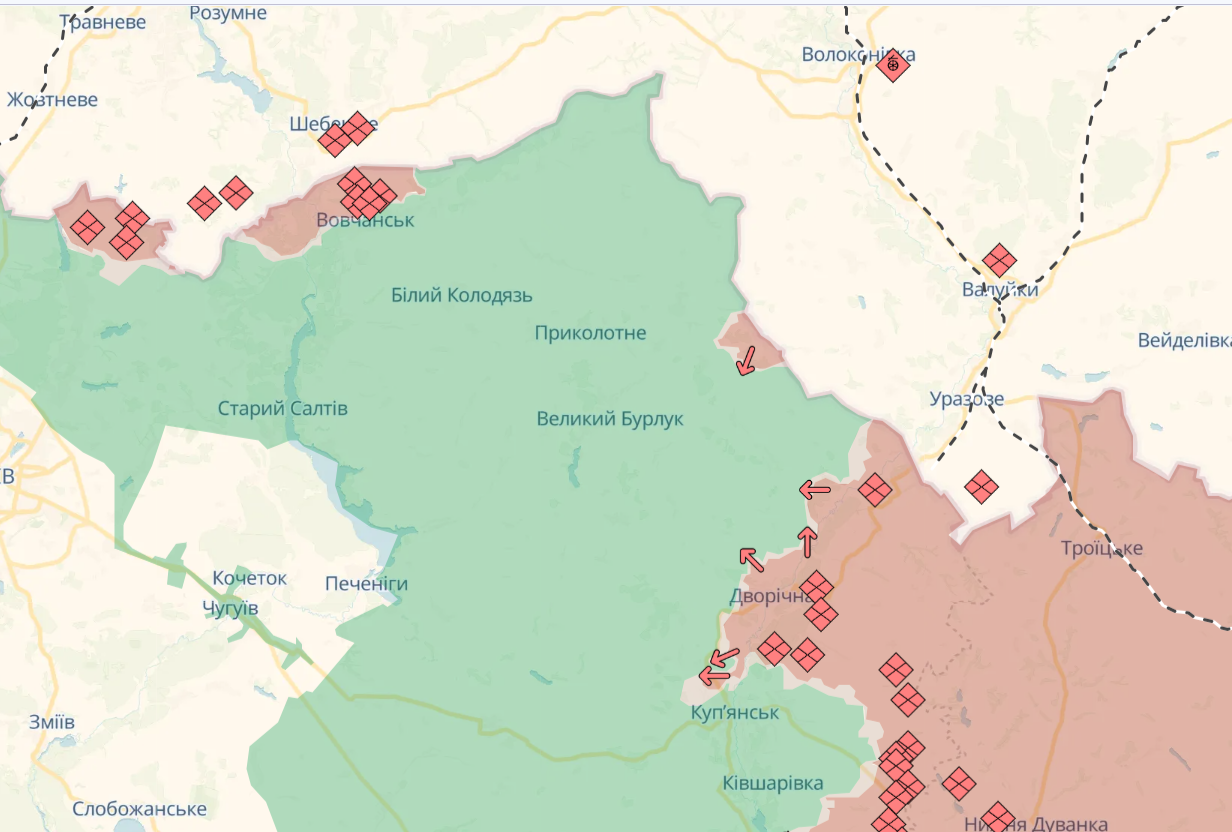Tactical groups of the Russia’s Northern Grouping of Forces (‘Sever’) are operating here: near Vovchansk and along the state border — composed of units from the 11th (Kaliningrad) and 44th (Petrozavodsk) army corps. Further toward Kupyansk, the 6th Army is engaged. Here's the interesting part: this army includes two recently formed divisions — the 68th and 69th — which differ structurally from typical Russian motor rifle divisions, being tailored specifically for assault operations. The 68th is advancing on Vovchansk, while the 69th and some assault elements from the 68th are operating near Kupyansk — a rather peculiar decision from an operational planning standpoint.
The shortest distance to Velykyy Burluk is from the border village of Milove — 23 km. For now, the enemy’s 45th Airborne Special Forces Brigade has captured a bridgehead 8 by 4 km in the border area — about 31 km². Russian 23rd Rifle Battalion is focusing on pushing toward Ambarne, making only about 200 meters of progress over three to four days. An unidentified Russian unit is periodically attempting, without success, to assault in the direction of Bolohivka.
On the northern flank, the 68th Division of the 6th Army and the 128th Brigade of the 44th Army Corps are completely bogged down in battles for Vovchansk. Still, they continue trying to advance, launching attacks both near the town itself and using assault groups of the 41st Motor Rifle Regiment of the 72nd Motor Rifle Division (from the same corps) toward Vovchanski Khutory from positions in Tykhe. Local skirmishes are ongoing near Starytsya.

On the southeastern flank of the Burluk triangle, the Russian 6th Army command faces significant problems maintaining the viability of its troops on their bridgeheads on the western bank of the Oskil River — in the northern sector at Stroyivka — Topoli — Kamyanka — Krasne Pershe, and in the southern sector at Fiholivka — Dovhenke — Zapadne — Kindrashivka — Radkivka — Holubivka — Dvorichna — Novomlynsk. A persistent unresolved challenge is transporting heavy combat equipment and supplying reserves in sufficient quantities across the Oskil. Much cannot be carried on rafts or fishing boats. The Russians’ movement is facilitated by the Kupyansk – Valuyky bypass road but complicated by the active operations of UAV units of the Kharkiv Operational-Tactical Group of the Defense Forces.
Attack vectors clearly indicate the Russian forces’ irrepressible desire to die on the road to Velykyy Burluk. This is evidenced by the tightly synchronized intensification of Russian military activity on the Vovchansk, Velykyy Burluk, and Kupyansk directions (from the bridgehead on the Oskil River near Dvorichna). The 6th Army is devoting at least as much attention to the Kupyansk axis – if not more.
Recently, the command of the Russian Northern Grouping (‘Sever’), in coordination with the right flank of the Western Grouping ('Zapad') on the Southern Slobozhanskyi axis, has been attempting to expand the bridgehead northeast of Velykyy Burluk and capture Khatnye before launching an assault on the town. To do so, their troops will need to cross the Velykyy Burluk River along the Shevchenkove – Mykhaylivka – Velykyy Burluk line. Settlements located along the river will present a significant obstacle to the Russian army.

If the Russians succeed, the line Vovchansk — Velykyy Burluk — Dvorichna could become a strong defensive line within their buffer zone in northern Kharkiv Region, provided they coordinate efforts from three directions in the medium to long term. The Defense Forces must make every effort to prevent this.
At present, there is no operational basis to claim that the offensive on Velykyy Burluk is one of the main directions of the summer offensive campaign of the swamp forces, but it remains a possibility amid their talks about a buffer zone in Kharkiv.
By the way, on Saturday, Ukrainian Defense Forces soldiers eliminated Colonel Lebedyev, commander of the 83rd Motorized Rifle Battalion of the 69th Motorized Rifle Division, who led assault operations on the Velykyy Burluk direction.









